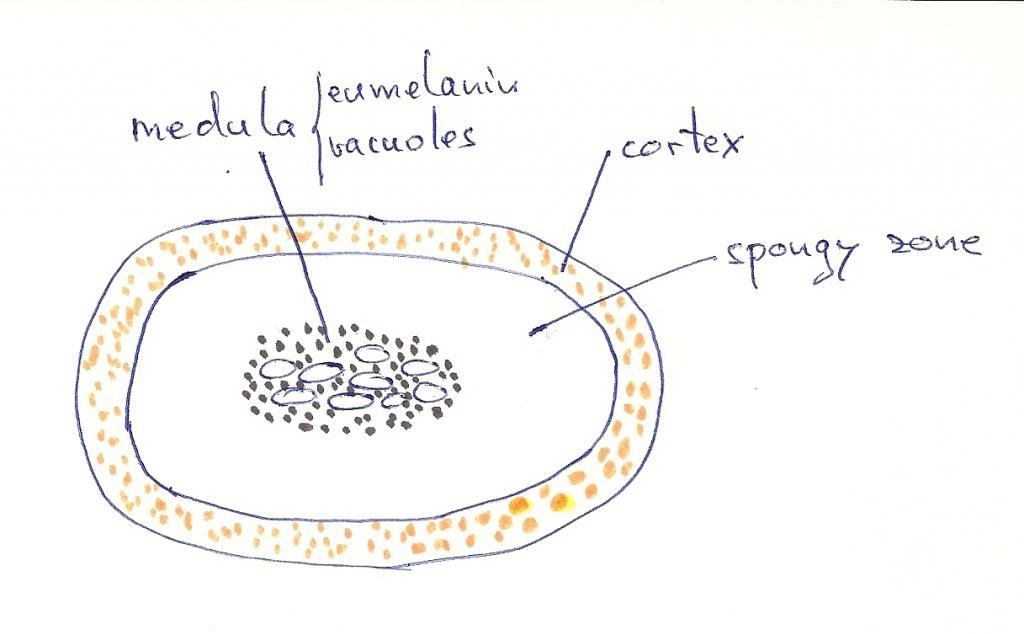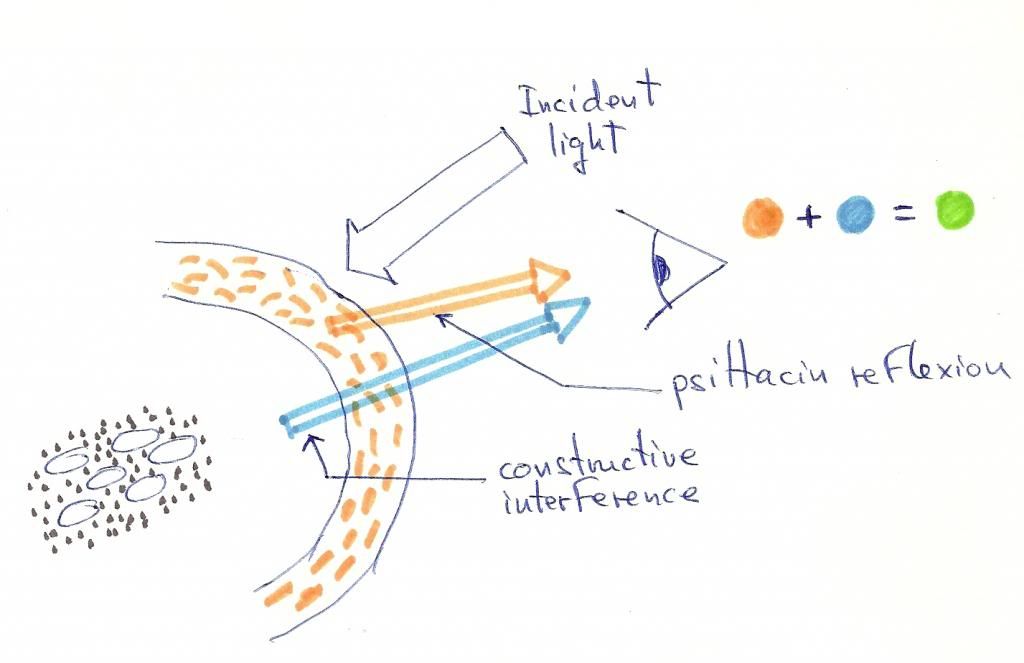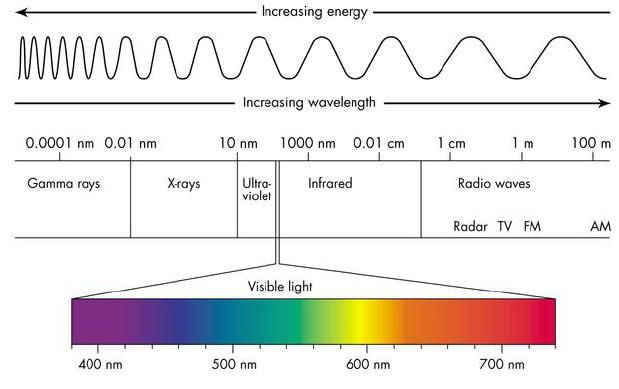Let's analyse a primary flying feather from an Ara araurana (not sure 100% but the feather was besides an aviary with Ara arauranas in the Loro Parque - Canary Islands - Spain). See the pics bellow and you will notice that the underpart of this feather is not grey but yellow. I have some reasons to think that this is a structural yellow, that is that the yellow we see is not due to the presence of psittacins (yellow pigments) but to the reflexion of the yellow wavelengths due to a highly ordered surface cortex acting as a "special mirror" selectively for this wavelength. Before continue and for better understanding you should read about structural colours here:
http://en.wikipedia.org/wiki/Structural_coloration
Let's analyse this feather.
The external part is blue and is not iridescent. This is due to constructive interference in the spongy zone by a mechanism named "deformed matrix" allowing to produce non iridescent blues, since the nanochannels in the spongy-like keratin are randomly oriented and there is not an ordered structure allowing to change the perceived wavelength depending on the view angle.
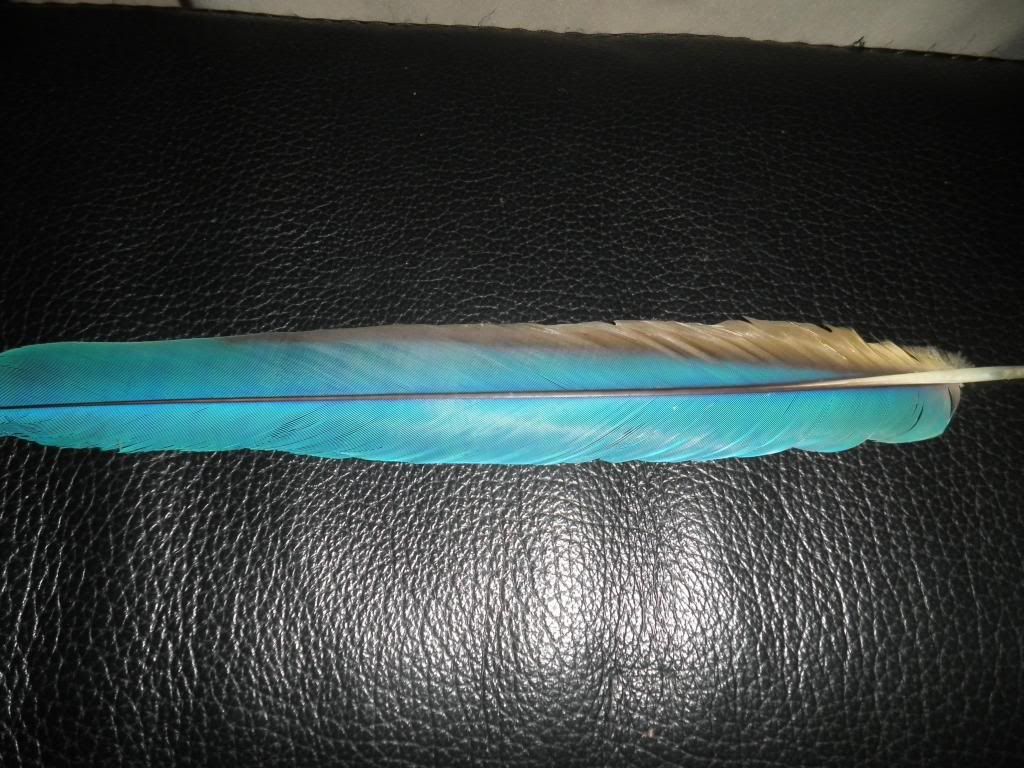
The inner part is yellow-golden and it is iridescent, that is its apparent colour changes depending on the view angle. Iridescence is a common phenomenon in structural colours due to a highly ordered nanostructure on the surface where light incides, so that the apparent colour depends on the angle of incidence. Probably the specific structural mechanism for this yellow colour is diffraction grating.
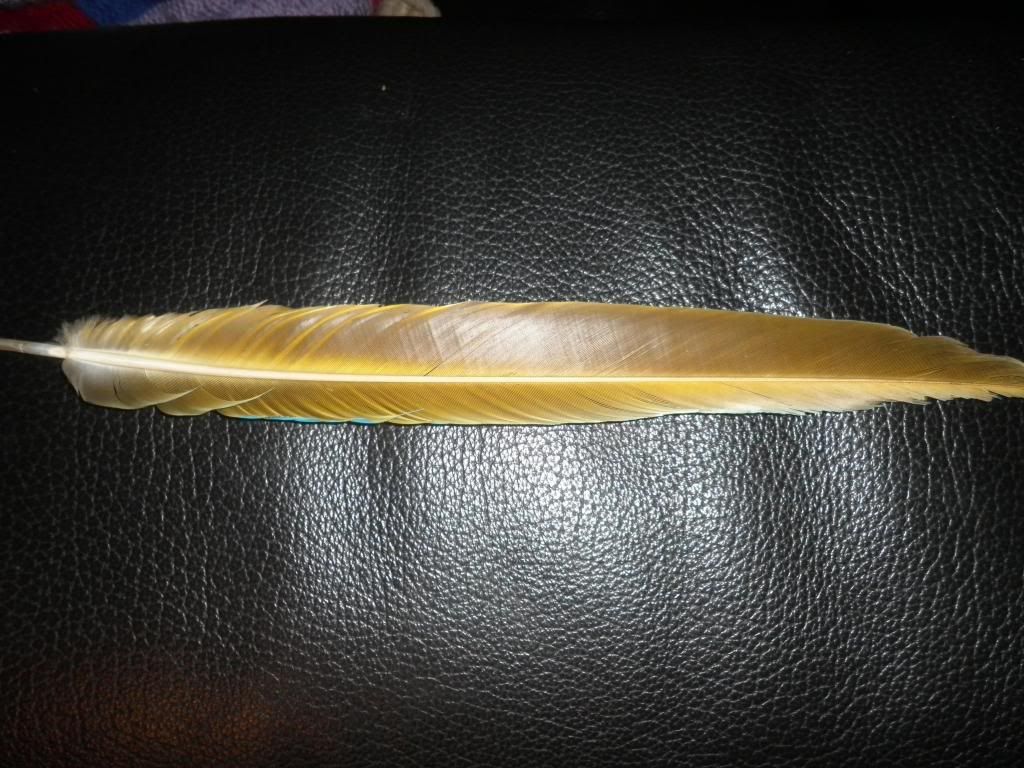
... and for those thinking that these pics do not belong to the same feather:
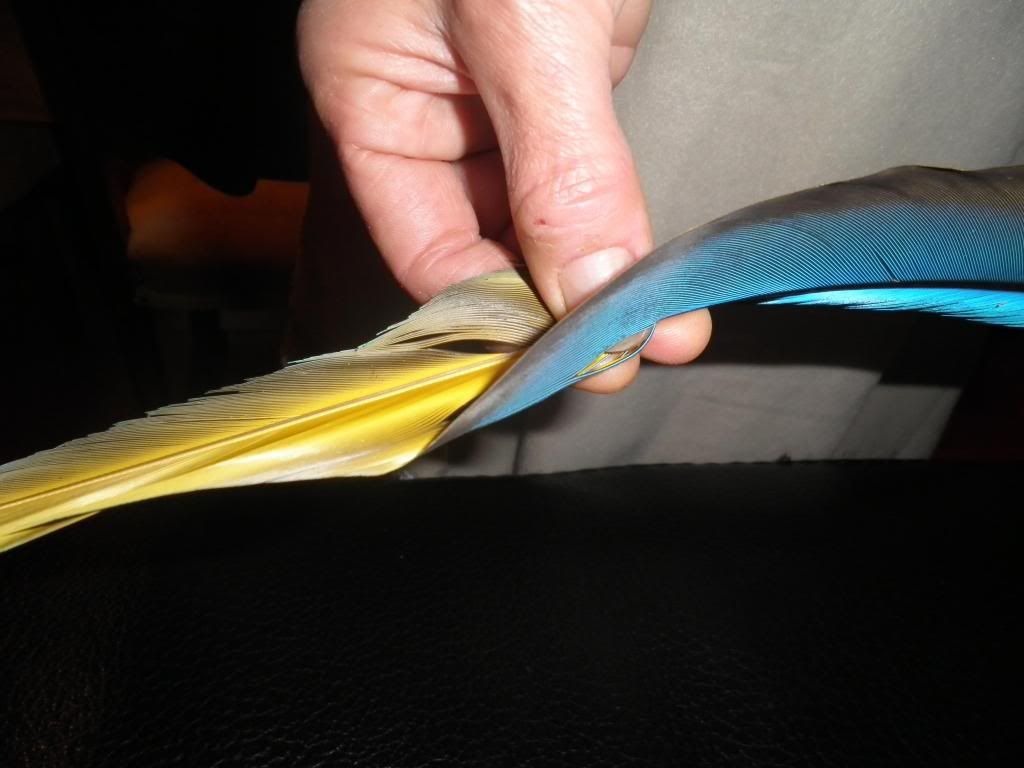
We all know the effect of destroying feather structure with a hammer : it destroys the spongy zone and constructive interference disappears. Then the blue colour becomes grey-black due to the underlying melanin. But ... what happens with the yellow colour of the underside? Have a look at these pics after "hammering" the feather at the marked areas:
Blue side:
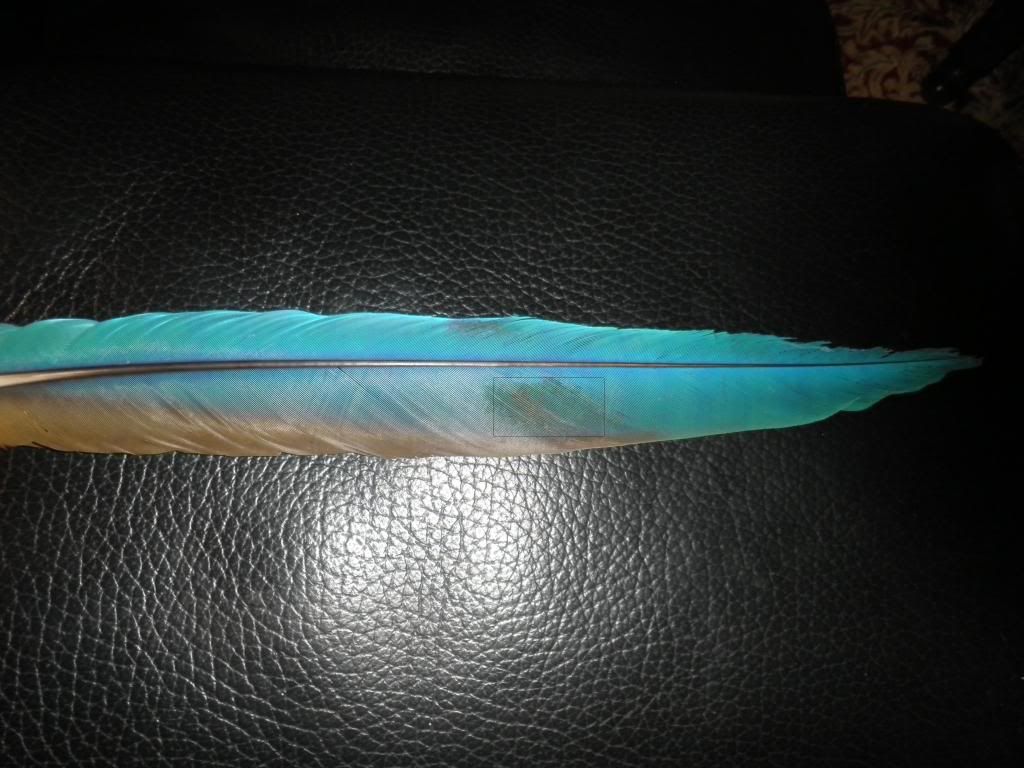
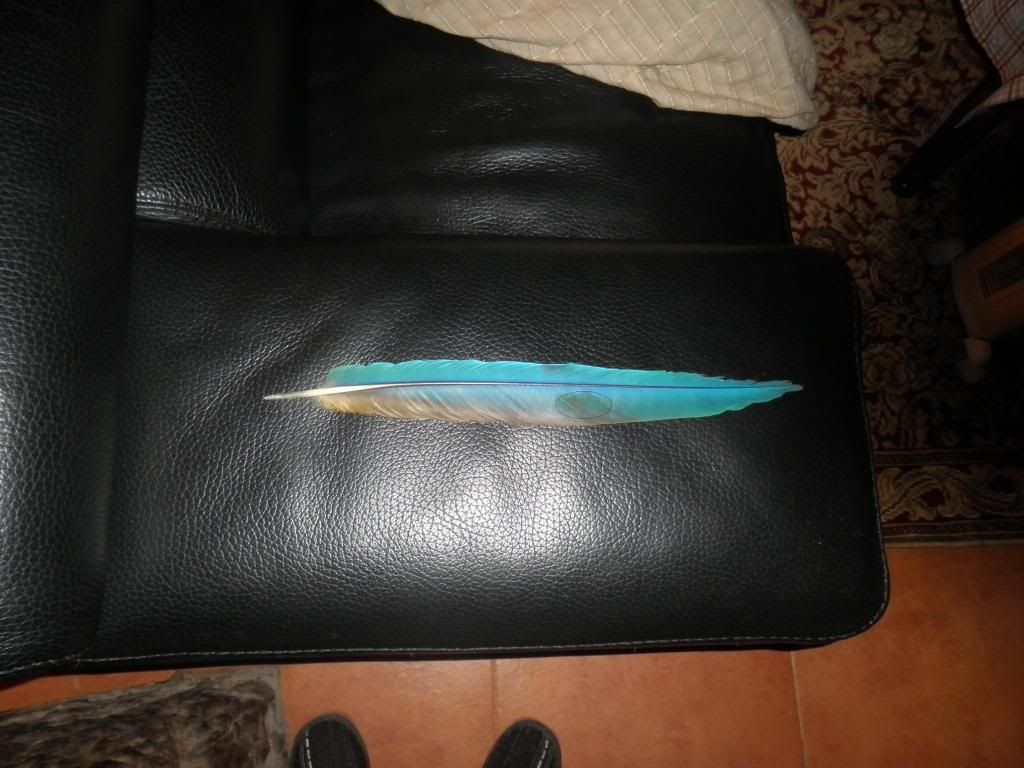
Yellow side:
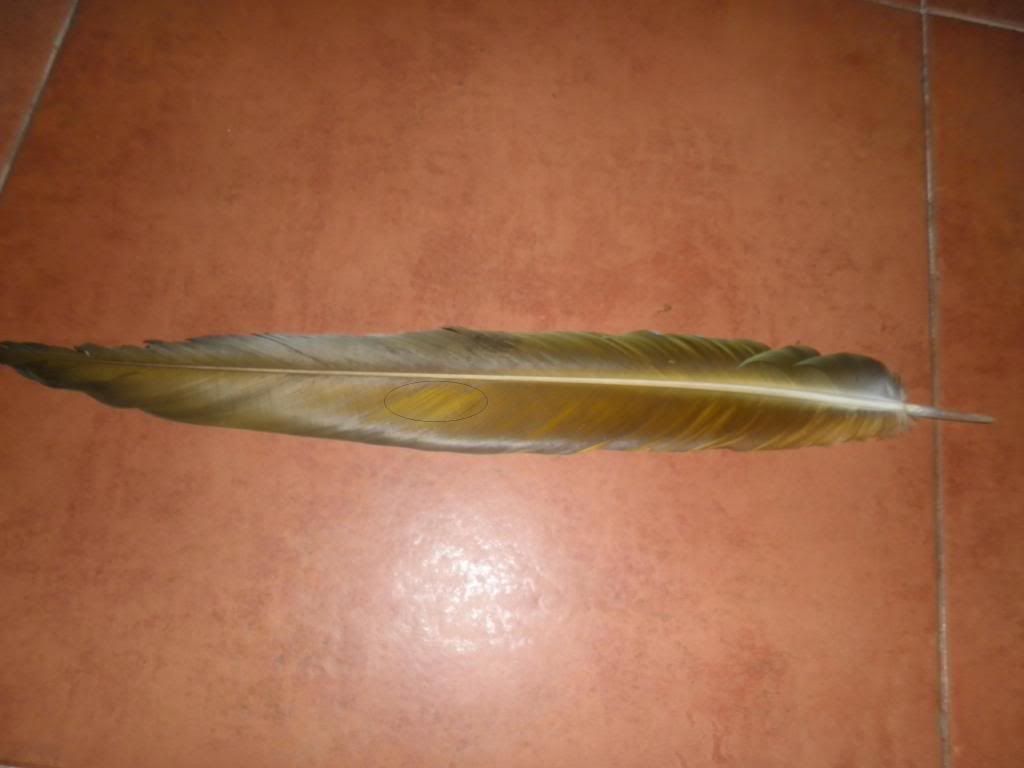
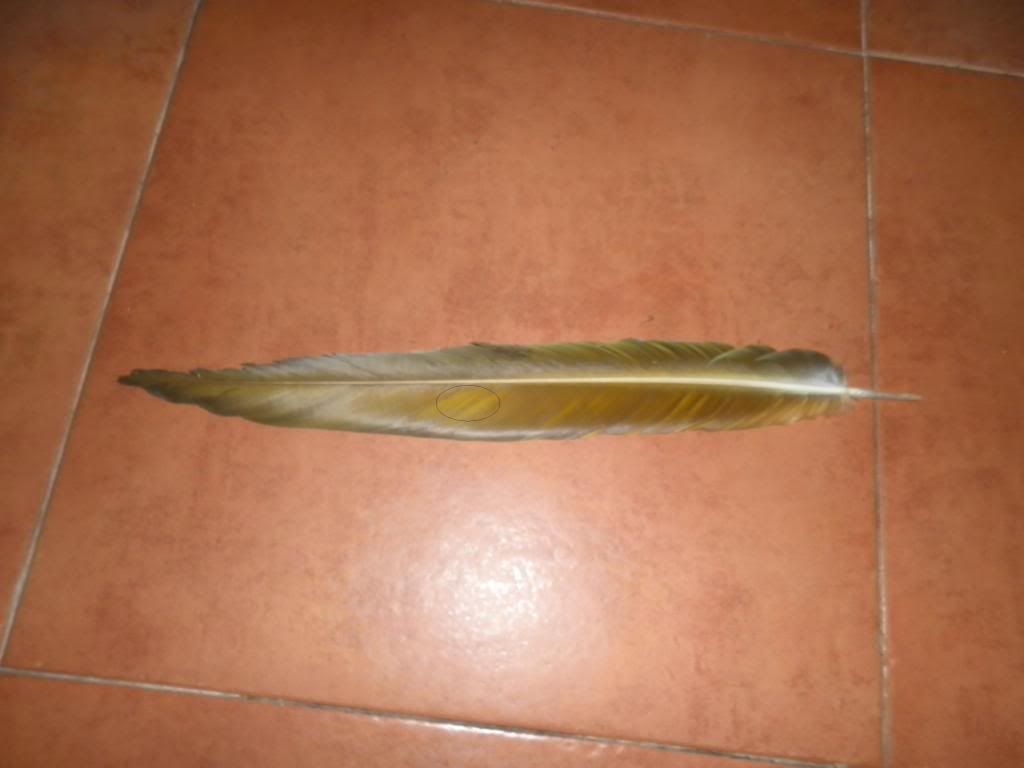
As you can see the blue side becomes grey-black but the yellow side appears even more yellow. What does it means? To me it means that this yellow colour is not due to constructive interference, which would depend on the spongy zone, but to a surface phenomenon related to the cortex structure.
Other facts to think that this is not a pigment dependent yellow:
1. Psittacins are very expensive to produce and if you look at any primary flying feather containing psittacins you will notice that they are not present in the whole feather but only in the part directly exposed to the ligth (external part). Structural yellow depends on feather structure and is present in the totality of the feather as you can see in the pic.
2. Lutinos (only showing psittacin pigment) are not iridescent, and most of structural colours are iridescent, like the yellow in this feather.
3. If it was a pigment dependent yellow the presence of structural blue and yellow psittacin would have produced an apparent green colour ... and you can see that it is not the case. The yellow wavelength is reflected in the surface and can not mix with the blue wavelength produced on the other side of the feather.
Let me know your comments about this possible structural yellow before trying to understand Emeralds.
Terry said before closing the psittacin genetics forum that, till now, there was not any evidence of the existence of structural yellows in parrots ... but this does not mean that they do not exist.
Regards
Recio
